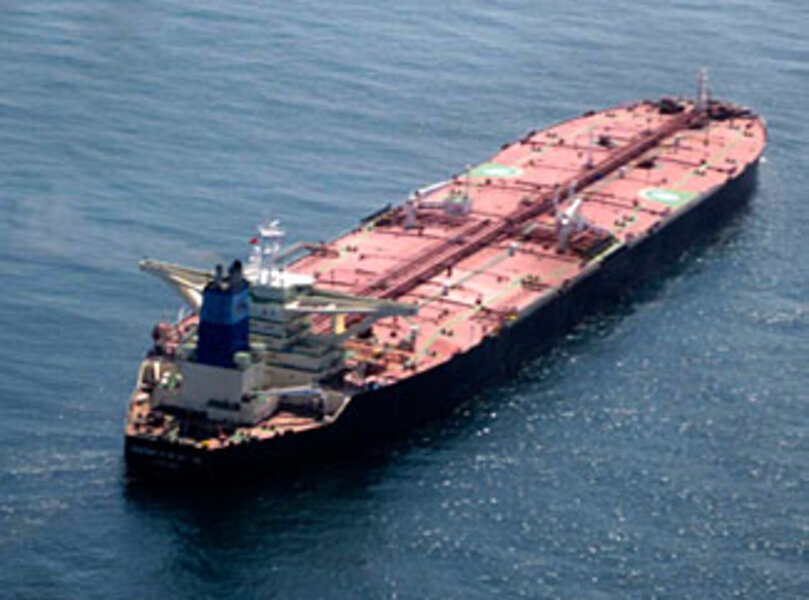Somali pirates seize oil tanker. Where are the anti-piracy forces?
Loading...
| Nairobi, Kenya
Almost exactly a year ago, a handful of modern-day pirates from Somalia in small, open skiffs shocked the world by hijacking a 1,090-foot oil tanker carrying $100 million of crude bound for the US.
Within months, a three-dozen-strong flotilla of vessels flying the flags of at least 12 different international navies had been deployed to protect shipping passing through what had become the world's most dangerous waters.
Yet, on Monday, the pirates did it again.
A second Very Large Crude Carrier, the Greek-owned Maran Centaurus, was seized more than 800 miles east of Mogadishu fully loaded with an estimated 2 million barrels of oil heading for New Orleans from Jeddah, Saudi Arabia.
Monday's attack is raising fresh questions about the effectiveness of the international effort to curb piracy, headquartered at the US Fifth Fleet's base in Bahrain.
"The reason it's still happening is that the big international naval deployment is concentrated in the Gulf of Aden, where there is a clearly defined, narrow shipping corridor, which is a much easier area to police," said Roger Middleton, piracy expert at the Chatham House think tank in London. "Now the pirates have packed up and moved much deeper into the Indian Ocean, which is just an enormous area. With the 30 or 40 ships available to the international naval force it is just not possible to police it properly."
How to pirate-proof your ship
Since the surge in piracy off Somalia, many commercial ship owners are paying for armed security to guard ships as they pass through the most dangerous stretches of water.
But "it is just not an option for these kinds of oil and gas ships," says Mr. Middleton. "No ship owner is going to think it is safe to have guys with guns standing on top of millions of barrels of flammable cargo."
Security consultants advise ships to drape barbed wire around their decks, to line dummy crew along the guard rails, and to employ evasive maneuvers once under attack.
This last tactic, at least, is difficult aboard a fully loaded 300,000-ton supertanker, which would also have been low in the water and thus easier to board.
So what to do to protect the world's shipping?
Rashid Abdi, Horn of Africa analyst at the International Crisis Group's Nairobi office, says there must be significant progress in creating a stable and effective government in Somalia itself, which can then police its own waters and prosecute the criminals on its own soil who orchestrate the pirate attacks.
"The solution lies in fixing the governance crisis that feeds it (piracy)," he says. "This requires a multi-pronged strategy, in which the military component is less dominant."
A ransom payment in the works?
By late afternoon, the Maran Centaurus had changed course and was heading toward the Somali coastline, according to Andrew Mwangura of the East African Seafarer's Assistance Program in the Kenyan port city of Mombasa.
The 1,085-foot vessel's 28 crew members – from Greece, Ukraine, Romania, and the Philippines – were believed to be unharmed.
Once it is at anchor, likely close to the Somali coastal towns of Haradheere or Hobyo, ransom negotiations will begin.
The Sirius Star, the only other supertanker ever to have been hijacked off Somalia, was freed in January after a payment reportedly of more than $3 million was paid.
• Staff writer Scott Baldauf contributed to this report from Johannesburg, South Africa.
--
Five new anti-pirate weapons ships can use – that aren't lethal. Read more here.





